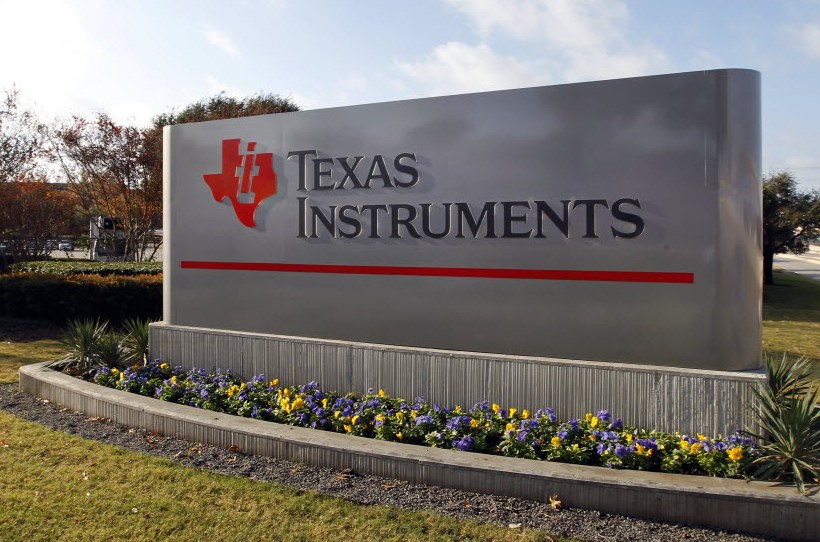by Charles D. Ellis, CFA, Chairman, Whitehead Institute, via CFA Institute
This post was originally published on June 23, 2015
Investment management is at once both a profession and a business, so it cannot be surprising that these two disciplines can come into conflict, particularly when gradual trends of change have conspired to bring such conflict forward slowly and quietly. Ironically, the driving force has been the increasing excellence of the skilled professional practitioners who have done so much so well in the exceedingly hard work of price discovery. Their collective success has made it increasingly difficult for any one manager or firm to be so consistently superior to the consensus of the other experts that it can repeatedly outperform that market pricing system — particularly in large diversified portfolios after costs.
Some will say that the crossing of the Rubicon, beyond which most active managers (after fees) fall short of the market, happened years ago. Others will say the crossing was more recent. And a few will believe it has not yet happened or, at least, has not yet happened to them.
During a long transoceanic flight, I found myself dozing while quietly reflecting on this question and the more than 50 years I’ve enjoyed the privileges of having a wide circle of friends in the profession and my full share of the economic benefits of being in the right place at the right time. As best I can recall, these were the thoughts that came to mind during my high-altitude reverie.
A Response to Critics
Something should be said. Active investing has been subjected to increasing abuse, particularly by those whose opinions are driven by the persistent accumulation of hard data and logical arguments. As we all know, active investing is on the defensive — even, some skeptics claim, “on the ropes” — having suffered a series of setbacks and increasingly virulent attacks. Especially scornful personal abuse has been aimed at active investing’s few remaining advocates.
The time has come to mount a defense, not by the usual citing of occasional exceptions or by dismissing the challengers with colorful pejoratives but, rather, by looking at the broader picture and pointing out the many indirect benefits that skeptics — with their narrow focus on just “beating the market” for clients — apparently continue to miss.
The recent past has been a particularly mean-spirited time for active managers owing to a rare market phenomenon: Small-cap stocks have performed poorly. For the 12 months ended 30 September 2014, the Russell 1000 Index (large-cap stocks) rose more than 19% while the Russell 2000 Index (small-cap stocks) rose less than 4%. This unusual differentiation in performance has recently penalized active managers, who often invest 10%–30% of their portfolios in small-cap stocks, and this factoid is being overexploited by the usual active-investing deniers. The “active attackers” are in full throat now as they gloat over such seemingly decisive data. Although sensitive defenders of active investing can retort that “it’s always darkest before the dawn” and cite the long history of how consensus conviction has almost always been wrong, the best defense is more robust. Before I present the case for the defense of active investing, however, let’s briefly review the so-called case for the prosecution.
Witnesses for the Prosecution
First came the academics, armed with their arcane null hypotheses, statistical inferences, and long equations littered with Greek letters. Most practitioners could safely ignore them, confident that nobody with a seat at the high table was all that interested in “ivory tower” mumbo jumbo. Active managers were certain that no practical men of affairs knew about — much less read — the obscure academic journals in which those in the cloister read, publish, and reference each other’s articles. Meanwhile, active managers could, if pressed, dismiss these attacks as a modern version of Bishop Berkeley’s quaint question, “If a tree fell in the forest with nobody there to listen, would it make any noise?”
Next came performance reporting and all sorts of odious comparisons. Fortunately, as Nate Silver continues to explain, the numbers we see combine both the signal and the noise in a never-ending cloud of mystery that invites manipulation: Change the base year, change the benchmark or standard of comparison, or report gross of fees rather than net. Or, in especially awkward situations, explain that certain disappointing people have been replaced, so all will now be better. If necessary, show again that most managers with superior long-term results have had three long years of underperformance, or explain that Morningstar’s ubiquitous star ratings, like all records of past performance, really have no proven predictive power and that staying the course is often wiser than switching horses in midstream.
More recently, the world of active investing has been under attack in reports that a majority of funds fall short of their benchmarks and that the trend is toward larger proportions of actively managed funds falling short and that the magnitude of underperformance substantially exceeds the magnitude of outperformance. Even worse, investment consultants are being accused of enhancing their favorable records by such standard manipulations as backdating to delete failed managers no longer covered and including the histories of strong managers they have recently added to their recommended-manager lists. Outside observers repeatedly refer to these two concerns — both blithely banished from the banter of those paid to advise on the selection of active managers.
A particularly painful attack on active managers purports to show that most are masquerading as true actives when most of their portfolios — 60%, even 80% — replicate index funds and only 20%–40% of the whole portfolio is “active share.” Thus, the active minority of their portfolios must earn back the fees charged on the whole. If active share was 25%, then that share’s burden, based on the total 1% fee, would be nearly 4% a year. If market returns were, say, 8%, the active share would have to achieve 50% more than market returns just to cover costs and break even. Yes, it could be done by some managers sometimes but not regularly by any managers.
To active investors, it must be painful to see “index huggers” bite the hand that feeds them and nurtures their ability to index. After all, the indirect benefits of active investing all swing on the hinge of one great reality: Active investors are so numerous, skillful, independent, and superbly well informed — so well provided with information, analyses, opinions, and judgments by an extraordinary array of experienced experts, so well armed with advanced information-processing devices, and so eminently capable and highly motivated economically — that they have succeeded at “price discovery” beyond our poor powers to add or detract.
All is fair in love and war and marketing. So, active investors can take great pride in their PR masterstroke of hanging on index funds the dreaded albatross “passive.” Would any among us ever want to be called passive? (Try it. “This is my husband. He’s passive.” Or: “Our team captain is passive.”) Of course not! Throughout our society, passive has a major negative connotation while active has a major positive connotation.
In addition, some overzealous fund companies dedicated to active investing have made matters worse by their extensive advertising of those few funds that have recently had great results. Although all professionals know it takes many years of superior performance to prove that skill, not luck, is causal, the vast investing public is unwilling to wait. And most are so unsophisticated when it comes to statistics that they don’t realize how dangerous selective sampling can be. So, performance envy runs rampant and investors mutter, “I’ll have what she’s having!”
Thus, defenders of active investing will have to concede one part of the prosecution’s case. Owing to the unfortunate practices of a few “bad apple” managers, investors’ attention is inevitably concentrated by industry advertising on those few funds that have had the best results in recent years. Of course, firms that manage 100 or more funds — most of which underperform — will wisely focus their ads on the few that happen to perform well. As industry insiders know, this practice leads almost invariably to money pouring into “five-star” funds after their best years and then pouring out after the nearly inevitable poor years, a process that destroys up to a third of what investors would have had if they had just left their investments alone. That five-star ratings are of virtually no use in estimating future returns is naturally not acknowledged by active managers, who have a responsibility to their employers and coworkers to “stay on message.”
More recently, the attacks on active investing have focused on fees. Attackers maliciously call upon our mystic chords of memory with such clever and evocative imitations as, “Never in the course of human history have so many paid so much to so few for so little.” The usual definition of fees — “only 1%” — is being reexamined. And fees are increasingly being reframed, not as a percentage of the assets investors already have or even as a percentage of returns — which would result in 1% of assets ballooning to about 15% of returns — but, rather (and correctly), as incremental fees relative to incremental returns, compared with the indexers who persistently deliver the “commodity” market rate of return at the market level of risk. In this particularly odious comparison, the average active manager is shown to be charging incremental fees that amount to more than 100% of the incremental returns — before taxes. (Fortunately for active managers, this unfortunate reality — a specter stalking the world of active investing — has not yet caught the attention of most investors.)
The Rebuttal
Although the cost and fees part of the attack against active investing may appear compelling, this narrow focus on benefits (or lack thereof) to investors — and only to investors — is obviously unfair to active investing. It leaves out all the many important social and economic indirect benefits enjoyed every day by everyone in the broader community. As an example of only one of the numerous benefits to millions — really, billions — of people, the costs of active investing (including investors’ persistent losses relative to indexing) are, seen properly, quite small. That active investing has not worked out especially well for investors is not a sufficient reason to declare active investing a failure. To see why, let’s look at the record of indirect benefits. They are both many and mighty.
Nobody doubts that efficient markets are a major social good in many ways. By enabling “outsiders” to participate with confidence, knowing that security prices are fair for both buyers and sellers and that transaction costs are low, efficient markets encourage millions of investors to trust the capital markets with their savings. Efficient markets thus enable growing companies — particularly new companies with great promise — to raise substantial amounts of capital at low cost. They also enable stronger companies to acquire weaker companies and to redeploy assets in ways that are more socially productive. A more dynamic corporate sector has been of great benefit to the economies and societies of the world.
As active investors have searched for, found, and arbitraged away market inefficiencies, the many local and national markets of the world have been increasingly combined into one global megamarket. Local companies are obliged by international investors to rise to the global standards of corporate discipline in law, accounting, governance, and many aspects of operating management as petty corruption declines, transaction costs shrink, and access to important information expands.
Aided by computers and theories of value, active investing has been integrating the world’s stock and bond markets and incorporating the markets for commodities, currencies, real estate, auto and credit card debt, and even several sorts of insurance. The increasingly unified global market has produced faster growth, more and better jobs, more democracy, and better prospects for world peace. Massive market integration has increased access to capital, lowered the cost of capital, distributed risk, reduced uncertainty, and raised confidence in saving and investing. The best long-term benefit of active investing — and of all its many benefits — is not just economic but also spiritual. With the release of the energies and talents of millions of people created by the shift from closed to open societies, we see greater access to education and interesting careers; better food, shelter, and health care; and more free choice in the overall “pursuit of happiness.” Although active investing has not been the only reason for all this great success — lifting over 1 billion people out of poverty in just one generation — these changes could not have occurred without the impact of active investing at the macro level.
At the micro level, the benefits of active investing’s success in making markets efficient have been comparably impressive. Malicious “active attackers” narrowly focus their vision and their analysis on the inability of active managers to achieve consistently superior returns — because the markets are so efficient, made so by active investors — but the reciprocal is also true. Not only is it hard to win; it’s also hard to lose.
Not losing — or at least not losing decisively — means that many investors, both individual and institutional, can continue to hope that they too will eventually be among the winners. This hope keeps them — and their active managers — in the game, which, of course, is crucial to the breadth and depth of our megamarkets. If it costs investors a little in lower returns, isn’t it clearly for the betterment of society at large? Since active investing is exciting and fun, investors who are losing a bit in purely economic terms surely enjoy a significant social good by being part of the action. (We all know that the players at the world’s famous casinos are, on average, “losers” if calibrated in purely financial terms, but since they keep coming back, those nonfinancial benefits must surely enhance the players’ overall experience.)
Some who attack active investors and their self-rewarding business practices seem uncomfortable with practitioners’ ample compensation. Unrelenting attackers — apparently driven by the “green grievance” of jealousy — curiously ignore the enormous benefits to everyone in our society that come directly from active investors’ generous philanthropy. We should be more appreciative of active investors’ services to society as leading patrons of the performing arts and as core benefactors of colleges, universities, museums, hospitals, and orchestras — and as major donors to political campaigns, which are so important to our democracy.
Although it may be temptingly easy for casual observers to fault active managers by focusing all too narrowly on the disappointing results and high fees experienced by naive but ever-hopeful investors, the splendid benefits rendered directly and indirectly by active managers clearly deserve much more of our collective recognition, respect, admiration, and even adulation.
Conclusion
Thinking about the benefits flowing into so many parts of the world’s economies and societies gave me a warm, contented feeling until I was roused by a flight attendant’s instruction to sit up and tighten my seat belt. I had enjoyed contemplating the satisfaction that professional investors could take in doing good, however indirect it might be, in the world as we see it.
Although my reverie could be easily dismissed as mere fantasy, my observations over many years — of the worldwide explosion in IT and communications and the proliferation of research on companies, industries, economies, currencies, commodities, and every aspect of the investment process, as seen through my work on a dozen distinguished investment committees at leading institutions — have convinced me that very few investment managers are able to match or beat the market, particularly after adjusting for risk and after deducting costs and fees. Fortunately, all investors have access, through low-cost indexing, to funds that match the market returns at no more than the market level of risk. And this access enables investors to concentrate on the winners’ game of defining their own unique objectives and designing long-term investment portfolios that are most likely to meet those objectives. To the extent investment experts continue to do the important work of advising clients on investment policies to achieve their true objectives and values and sustain their commitments through various markets, our profession will be appropriately admired and well rewarded.
Charles D. Ellis, CFA, is chairman at the Whitehead Institute. The preceding guest editorial originally ran in the July/August issue of the Financial Analysts Journal.
This post was originally published on June 23, 2015
If you liked this post, don’t forget to subscribe to the Enterprising Investor.
All posts are the opinion of the author. As such, they should not be construed as investment advice, nor do the opinions expressed necessarily reflect the views of CFA Institute or the author’s employer.
Photo credit: ©iStockphoto.com/EdStock
Copyright © CFA Institute
















